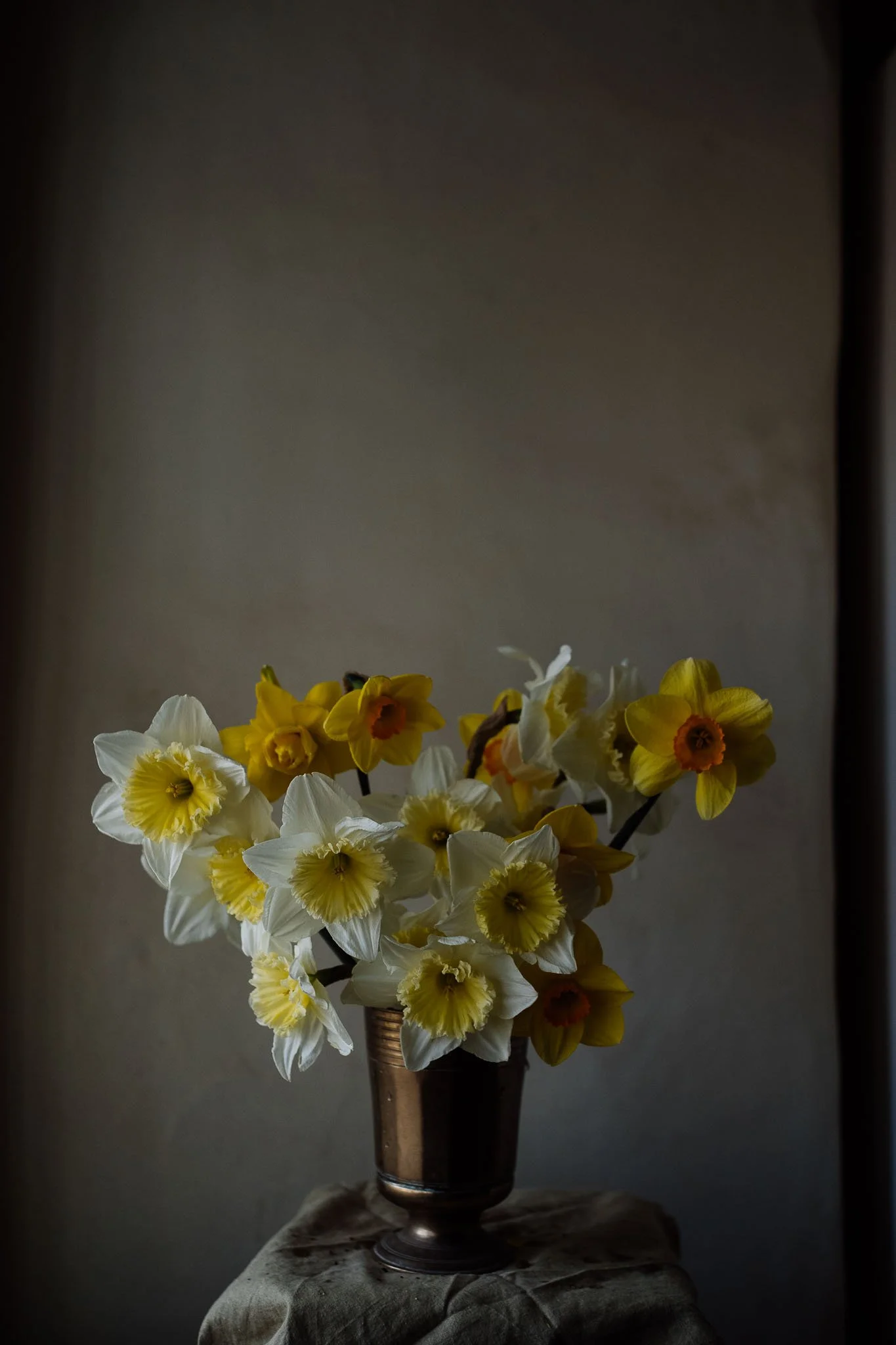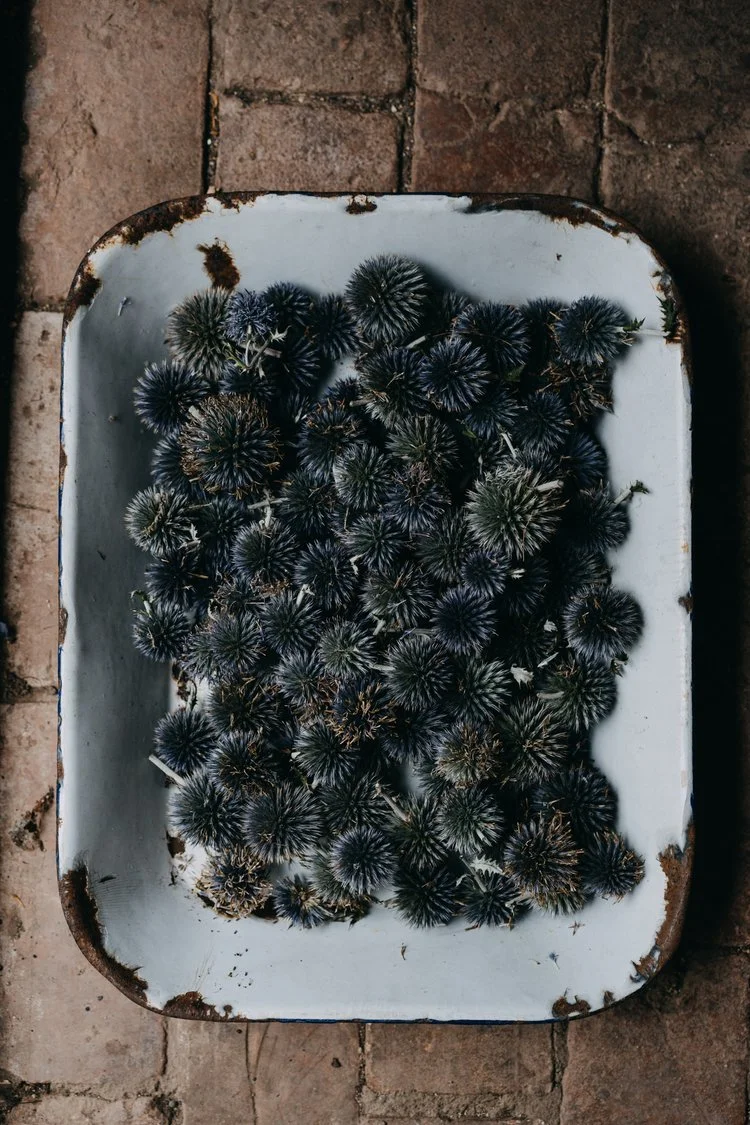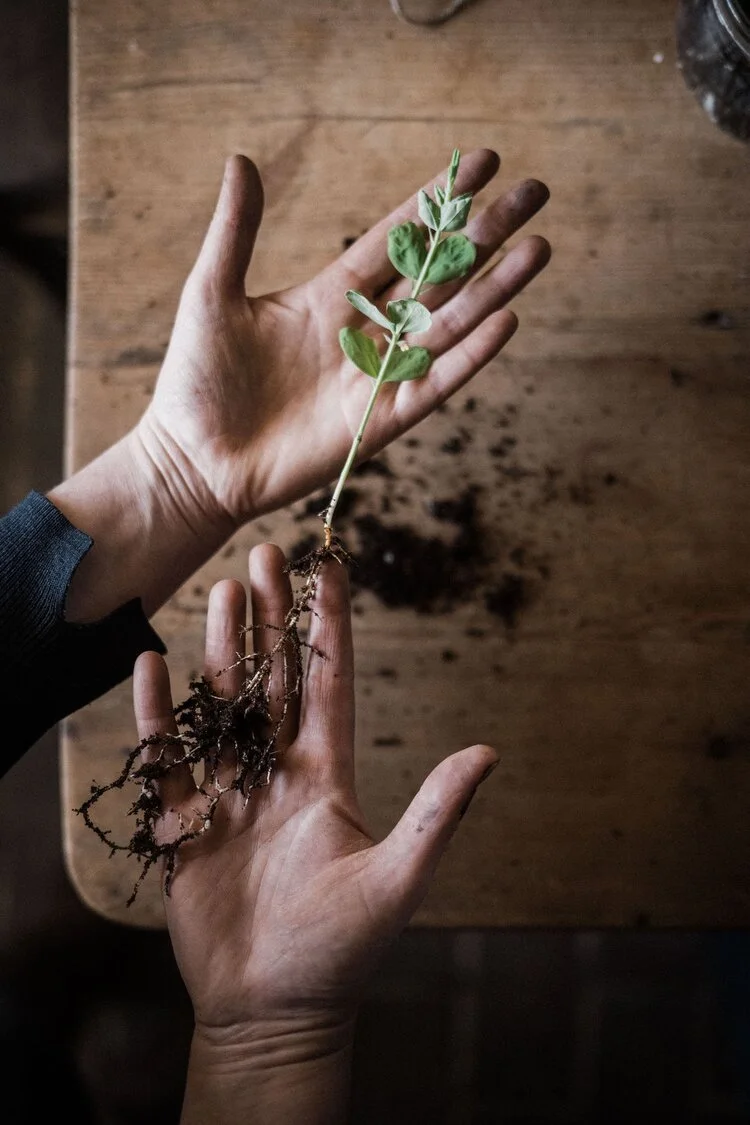Garden Jobs in March
March arrives, and suddenly the moment of shift I’ve been waiting for all winter is here: the vernal equinox. The almost imperceptible shift that happens when the night and day balance so perfectly, and then we topple headlong into bright, sharp, delighting mornings, and long, languorous, just-one-more-drink evenings in the orchard. The lightness stretches and the dark contracts, and there is growth and fresh wild garlic, and the sound of lawnmowers choking into life after the season of being left idle in the shed. I don’t feel the weight of winter when it is present, but I feel the lightness of its lifting. Then, just when the air starts to warm and the blossom starts to blossom, there is the smell.
I don’t know what the smell is. Maybe my ancestors did, maybe the scientists do. There is a theory that the human nose evolved to detect the chemical compounds that characterise healthy soil in the same way a shark’s nose evolved to detect a drop of blood in an ocean. It is not petrichor before you tell me it is. It isn’t even geosmin. It isn’t a scent that I detect with my nose, but with my whole body. It is the return of life itself.
I feel it first on my skin and then in my bones. I fizz like shaken champagne, and I am reminded of my very favourite PG Wodehouse quote:
"What a morning! Warm, fragrant, balmy, yet with just that nip in the air that puts a fellow on his toes. The yeast of spring is fermenting in my veins, and I am ready for anything."
Uncle Fred in the Springtime (1939)
It’s not just me though. Life and potential are everywhere I look. The leaves of the trees, the tips of the weeds pushing through the soil, the red of the returning peony buds, the seeds in the trays on my windowsill. Now is the time to start flinging seed around with abandon. If your ground is warm enough, the light has caught up so try a bit of direct sowing with some old seed or those spare packets that are going to languish for another year if you don’t use them up.
There is magic around the vernal equinox which means risks can pay off in unexpected ways. Old magic. Ask the cosmos for your wishes to come true.
I know what I’m wishing for and there’s champagne on ice. The equinox is the time for change.
Epimedium
March garden jobs for the earth
When you are looking around for seeds to start, put aside annuals and go for the perennials.
If you have blank beds, scatter phacelia seed or other green manure. If you don’t do this, nature will do it for you and you will have weeds everywhere. My only exception to the no weeding rule is bindweed. Pull it out slowly and carefully wherever you see it.
Keep adding to and turning your compost heap. You will probably have a lot of greens so mix with cardboard or woodchip to create glorious, friable compost. If you start a new one, add biodynamic compost preparations.
March garden jobs for the birds
Birdsong reaches its peak towards the end of March. As Pop Larkin says in The Darling Buds of May, they go hell for leather in breeding season. Winter visitors are starting to move on and the earliest summer migrants, like the chiffchaffs, are starting to arrive. Pressure on food resources is intense, and flocks of finches and sparrows can descend on gardens in search of food. Keep going with stocking up the feeders but make sure you clean them regularly too. Hygiene is crucial.
March garden jobs for the flowers
Watch the weather
This utterly glorious weather has been wonderful. Wonderful. Life-affirming. Bittersweet. But there are rumbles of a blast of cold weather. It doesn’t seem to be particularly severe or enduring, but a short and sharp frost will do for the blossom. Unless you are in Cornwall or in another climate entirely, accept that spring has not quite sprung reliably, and keep any tender plants and vulnerable seedlings in a place of safety.
Anything in a pot will be absolutely dry as a bone. Water well, but not too often. I have also been moving lots of grasses and perennials around in the beds and they will benefit from frequent watering too.
Sow and sow on
The greenhouse is starting to feel a little bit like Jenga. There are seed trays and there are pots. There are trays in bags and there are trays under clear lids. A third sweet pea sowing has just gone in, as well as the first of the more tenders (that’s cosmos and nasturtium essentially). I have pricked out a tray of delphiniums but I know there are more to come. I will put those out for the frost to get at the weekend.
If it wasn’t for the frost that was forecast, I would be considering started some direct sowing, if only because I have run out of seed compost. But I will not risk it. Patience is a virtue.
As is restraint. Sow little and often. Hedge your bets. My biggest mistake of last year was to over-commit too early. I had packets with not many seeds in (not mine, I hasten to add) and I scattered some on a seed tray, looked at the few left in the bottom and, in the spirit of minimalism and de-cluttering, thought I might as well put them all in. We all have tins and tubs of old, half-full (half-empty?) seed envelopes filling up our space don’t we? That’s what I tell myself anyway. So I chucked them all on and put the envelopes in the bin.
What a mistake. Some of them I sowed too soon. Some were eaten by slugs. The mouse saw to a few.
But I have learned my lesson. Little and often. A pinch here and a pinch there. The added bonus here is that this is the backbone of successional sowing. If you want one week in late June where everything flowers and nothing the rest of the year, then absolutely sow everything you have in the middle of April. Lots of cut flowers have a seed to flower time of between 60 and 70 days in optimal conditions, so it figures that if you sow everything together, it’ll all flower together. Your garden will look astonishing for a while, and then nothing until the first flush of flowers has set seed, dispersed, and then the second generation has flowered again. Do a bit of all your hardy annuals now, and then do it all again in two weeks, and then again in a month. Throw in a few warmth-loving flowers in at the beginning of May, and you’ll be sorted.
Starting perennials
My flower field, Malus Farm, is being guided more and more by regenerative principles and that means the surface of the soil should be covered, and the underneath of the soil should be as undisturbed as possible. & that means as much permanent planting - perennials - as possible.
It is still early in the season so I would recommend starting under glass if you possibly can, unless your climate is exceptionally mild. Some perennials will like a period of cold before bursting into life in the spring, so do some research on those which will need to feel the winter and pre-chill in your fridge.
/ Achillea
/ Verbascum
/ Perennial grasses
/ Astrantia
/ Lady’s mantle
/ Cephalaria gigantea
/ Hollyhocks
/ Dianthus (Try D. carthusianorum)
/ Echinaceas (I favour E. pallida)
/ The big textural plants such as Echinops and Eryngium
/ Baptisia
/ Bupleurum
/ All the heucharas
Echinops
Annuals
Hardy annuals are low-maintenance and enthusiastic germinators. I do start some carefully in pots and trays but the rest, I just chuck around in a spare flower bed.
/ Agrostemma (corncockle)
/ Ammi majus
/ Bladder campion
/ Borage
/ Calendula
/ Chicory
/ Cornflowers
/ Cerinthe
/ Grasses (all of them!)
/ Larkspur
/ Nigellas
/ Opium poppies
/ Orlaya grandiflora
/ Scabiosa
Other bits
Still not too late for sweet peas. As above, little and often. Also, peas for peatops and for eating.
If you have daffodils and narcissi in the ground and they have flowered and gone over, snap the heads off to stop all the energy going into seed production. If you have got them in pots put them somewhere where they will catch the sun and wait until the foliage has died back and then you can put them in the ground this autumn.
Plant out any autumn-sown hardy annuals.
Pinch out your winter-sown sweet peas. They might be starting to put on spring growth so increase watering.
Bask in the blissful, early spring sunshine. Glorious.



